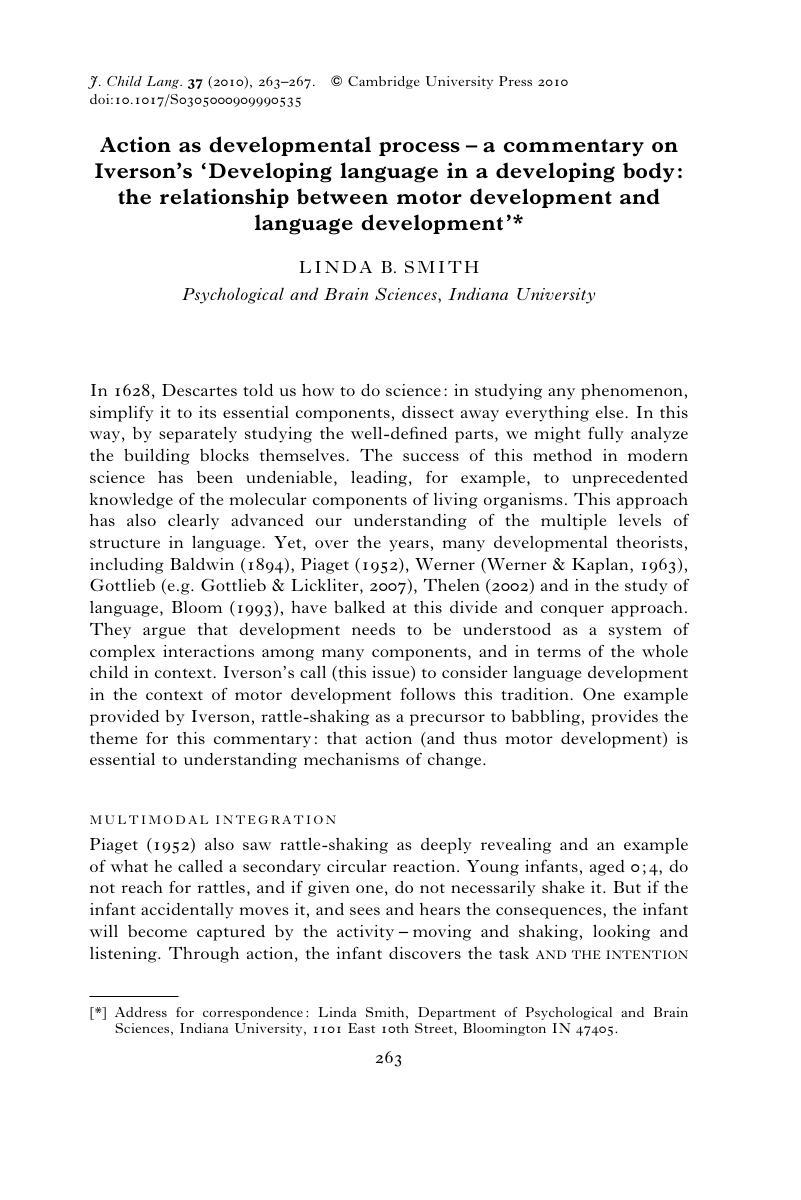Crossref Citations
This article has been cited by the following publications. This list is generated based on data provided by Crossref.
Melås, Maria Kristine José
Kvello, Oivind
and
Dalen, Monica
2014.
Internationally Adopted Children After Arrival: Temperament, Behavior Problems, and Age at Adoption as Predictors of Early Motor and Communication Competence.
Adoption Quarterly,
Vol. 17,
Issue. 1,
p.
28.
De Jonge-Hoekstra, Lisette
Van der Steen, Steffie
Van Geert, Paul
and
Cox, Ralf F. A.
2016.
Asymmetric Dynamic Attunement of Speech and Gestures in the Construction of Children’s Understanding.
Frontiers in Psychology,
Vol. 7,
Issue. ,
Yurkovic-Harding, Julia
Lisandrelli, Grace
Shaffer, Rebecca C.
Dominick, Kelli C.
Pedapati, Ernest V.
Erickson, Craig A.
Yu, Chen
and
Kennedy, Daniel P.
2022.
Children with ASD establish joint attention during free-flowing toy play without face looks.
Current Biology,
Vol. 32,
Issue. 12,
p.
2739.
Will, Elizabeth A
Hills, Kimberly J
Smith, Kayla
McQuillin, Samuel
and
Roberts, Jane E
2024.
Developmental associations between motor and communication outcomes in Fragile X syndrome: Variation in the context of co-occurring autism.
Autism,
Vol. 28,
Issue. 9,
p.
2191.



